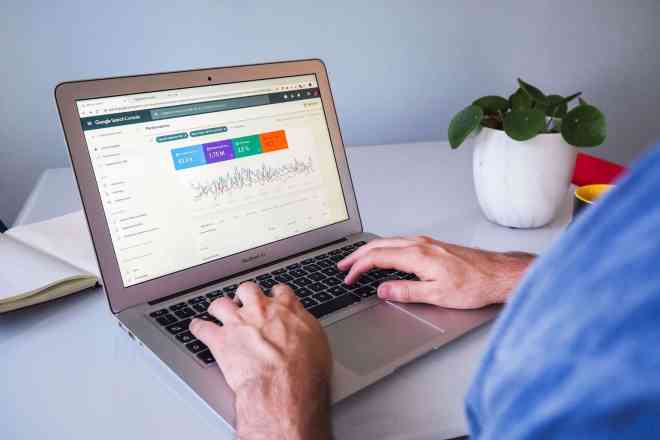Email marketing is still one of the most effective digital marketing channels today. With the proliferation of social media and messaging apps, emails have become a more reliable way to reach consumers than before. Yet while B2B email marketing continues to be effective at driving sales, there are a few things to keep in mind if you want your emails to convert.
Here are 11 B2B email marketing best practices to follow this year.
1. Prove Your Brand Can Help
Provide proof of expertise by showing your audience how your product or service has worked for others. Showing your audience how past customers have succeeded in reaching their goals using your product or service can be highly persuasive in their purchase decision. From testimonials to case studies — you showcase the results that other companies have achieved using the same tool.
As a result, this builds trust with your audience and shows they can be successful too. If you need testimonials from customers, consider asking for one as part of the sales process. Doing so will allow you to collect and use them in your email marketing campaigns.
2. Tailor Your Email to Your Audience
In your B2B email marketing strategy, you must ensure that you’re personalizing emails and tailoring them to your audience. Otherwise, sending a generic email can feel irrelevant and may cause readers to unsubscribe.
Every member of your audience is different. Therefore, this requires you to take a unique approach. Instead of sending the same message to one audience, consider breaking your subscribers into segments by creating buyer personas.
As soon as you start crafting content for your emails, you can send each segment highly personalized and relevant content. However, you’ll need to do more than throw in a company or recipient’s name. Instead, write something that feels relatable based on what their role is, for example.
3. Keep Emails Short, Focused and Readable
A long, complex email is overwhelming and can make it difficult to read. For best practice, it helps to keep your emails short and to the point. That way, the content is readable and easily digestible.
Consider using short sentences, paragraphs and sections. It also helps to break up the text with bullet points where appropriate. You can even use images to illustrate key points and supplement your written content.
Marketers also make sure to use a font that’s large enough to see on devices. Size 14 to the 16-point font is standard. The fonts should also be clean and work well in digital formats so that it’s easy on readers’ eyes.
Using a standard serif font, like Times New Roman or Arial, is sufficient.
4. Nurture Relationships
Building relationships is one of the most important B2B email marketing best practices. Nurturing leads with personalized messaging is crucial because it builds trust with potential customers.
The best way to nurture relationships with potential customers is by being helpful. You can accomplish this by including a call-to-action (CTA) on all campaign emails that lead them to the next step in their journey.
Doing this creates a stronger, more meaningful bond in the relationship and may secure them as clients.
5. Use an Enticing Subject Line
The subject line of an email is one of the most important parts of your message. Because it’s what readers will see first, it needs to be enticing enough for them to open it.
Therefore, it’s best practice to ensure the subject line is relevant and catchy. For example, you could include a CTA in the subject or ask your readers a question. Doing this will capture their attention and appeal to their curiosity.
Try not to be afraid to use emojis in the subject line, either. Emojis can enhance your subject line and draw the reader into your message.
6. Optimize for Mobile
One of the best B2B email marketing best practices you can follow is mobile optimization. Most customers read emails on their smartphones these days, even for B2B audiences. Therefore, building a responsive email design that works for all screen sizes is crucial. That way, it makes it easier for subscribers to read your emails, regardless of their device.
In addition to screen size, it’s best to ensure you optimize all images. If you have large images in your email, consider compressing them to avoid taking up more space than necessary.
Otherwise, the image could be difficult to see within the email and cause a poor user experience. That’s because the reader may have to scroll horizontally or vertically to see the entire image.
Therefore, you must ensure you size each image appropriately.
7. Be Consistent With Your Branding
Consistency is key to brand recognition. Therefore, your company’s email signature needs to be the same in every email you send, including:
- Subject line
- Body copy
- Thank-you message
Additionally, you must brand your emails with consistent colors and fonts. A mix of too many styles will confuse readers and make them feel like they’re reading different emails from other companies — instead of one cohesive message.
Consistency is crucial because it builds trust among customers. It helps them to recognize your brand more easily — which can boost click-through rates significantly.
8. Include a Clear Call-to-Action
There’s a good reason why you should place a CTA button inside your email. They make it easy for recipients to take action. When placing a CTA button in an email, consider following the guidelines below:
- Make sure to include a big and bold CTA button. It should be obvious, easy to find and placed above the fold.
- The styling of the button should match your brand identity. That way, it blends seamlessly with everything else.
- Placing the button in the center or near the bottom will make it more noticeable and easy for users to navigate. If they don’t see the button immediately, they may not notice it as they scroll through the content.
9. Test and Optimize Your Emails
A/B testing is the process of sending two versions of the same email to a small percentage of your subscribers — then comparing their performance. When you A/B test your email, you can determine which version performs better and make changes accordingly.
To understand which campaign works more effectively, you must keep track of your key performance indicators (KPI). These may include metrics such as click-through and open rates.
Tracking these KPIs will represent the campaign’s success and help you decide which email to move forward with within your strategy.
10. Leverage Automation Tools
Automation tools allow businesses to save time and resources when creating email campaigns. They enable you to set it and forget it because you can change the setting to send an email at a specific time or day.
Automation is everything in email marketing. It ensures you send your campaigns out consistently across multiple channels. It also eliminates repetitive tasks — allowing marketers to utilize their time on more important to-dos within an organization.
Yet, even though automation works to send out emails for you, your marketing team should still ensure the campaigns are successful by monitoring KPIs.
11. Educate Your Audience
Each time you send an email, it should contain relevant information for prospects. These should include topics you know your audience is interested in every time. By using your knowledge to craft relevant newsletters, you create engaging content that will make your prospects keep returning for more to consume.
Sending an email with content that relates to your customer’s industry makes it extremely valuable for them. In turn, the recipients will value your company more, which is vital to nurturing the relationship.
That’s why, instead of generating sales, it’s best to build their confidence by focusing on their needs first.
Integrate These B2B Email Marketing Best Practices Into Your Strategy
Email marketing is a tried and true method for getting your message across, and you can use it in various ways. If you’re trying to build an audience, this is one of the best routes to go in digital marketing.
When creating a B2B email marketing strategy, consider integrating these best practices to achieve success.
About The Author
Eleanor Hecks is the Editor-in-Chief of Designerly Magazine, an online publication dedicated to providing in-depth content from the design and marketing industries. When she's not designing or writing code, you can find her re-reading the Harry Potter series, burning calories at a local Zumba class, or hanging out with her dogs, Bear and Lucy.


